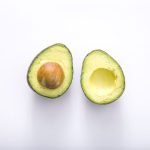Turbinado sugar, often referred to as “raw sugar”, is a less refined alternative to white sugar that has gained popularity among health-conscious consumers in recent years. With its slightly larger crystals and subtle molasses flavor, turbinado sugar offers a unique sweetness that can enhance a variety of dishes and beverages. In this article, we will delve into the origins of turbinado sugar, its nutritional profile, and how you can incorporate this raw sweetness into your culinary creations.
The Origins of Turbinado Sugar
Turbinado sugar is produced from the first pressing of sugar cane, which results in a light brown, coarse sugar with a mild caramel flavor. Unlike white sugar, which undergoes multiple stages of refining and processing, turbinado sugar is minimally processed, allowing it to retain some of the natural molasses content present in the sugar cane juice. This gives turbinado sugar its distinctive golden hue and subtle caramel notes, making it a popular choice for those looking to add a touch of natural sweetness to their dishes.
Nutritional Benefits of Turbinado Sugar
While turbinado sugar is still a form of sugar and should be consumed in moderation, it does offer some nutritional benefits that set it apart from traditional white sugar. One of the key advantages of turbinado sugar is its slightly higher mineral content, including small amounts of calcium, potassium, and iron. These minerals are present in the molasses that remains in the sugar crystals, providing a small but welcome nutritional boost compared to refined white sugar, which is stripped of most of its natural nutrients during processing.
In addition to its mineral content, turbinado sugar also has a lower glycemic index than white sugar, meaning that it causes a slower and more gradual increase in blood sugar levels. This can be beneficial for those looking to manage their blood sugar levels more effectively or reduce their overall sugar intake. However, it is important to note that turbinado sugar is still a source of calories and should be consumed in moderation as part of a balanced diet.
Incorporating Turbinado Sugar into Your Cooking
Turbinado sugar’s versatile flavor profile makes it a great addition to a wide range of dishes and beverages. Here are a few ideas to inspire you to incorporate this raw sweetness into your culinary creations:
Sweeten Your Morning Coffee: Sprinkle a teaspoon of turbinado sugar into your morning cup of coffee for a subtle hint of sweetness and a touch of caramel flavor. You can also use turbinado sugar to create a simple syrup for homemade lattes or cold brews.
Enhance Baked Goods: Replace white sugar with turbinado sugar in your favorite baking recipes to add a depth of flavor and a slightly chewier texture. Turbinado sugar works well in cookies, muffins, and quick breads, giving your baked goods a deliciously rustic touch.
Create Flavorful Sauces and Marinades: Turbinado sugar can be used to create rich and savory sauces and marinades for meats, poultry, and seafood. Its subtle caramel notes pair beautifully with soy sauce, garlic, and ginger, adding a touch of sweetness to your savory dishes.
Experiment with Desserts: Use turbinado sugar to caramelize fruit for a simple yet elegant dessert, or sprinkle it on top of crème brûlée for a crunchy, caramelized finish. You can also use turbinado sugar to make homemade caramel sauce or to sweeten whipped cream for a decadent topping.
Incorporating turbinado sugar into your cooking repertoire can add a unique depth of flavor and a touch of natural sweetness to your dishes. Whether you use it in your morning coffee, baked goods, savory sauces, or indulgent desserts, turbinado sugar is a versatile ingredient that can elevate your culinary creations and satisfy your sweet tooth in a more natural and wholesome way. So why not give this raw sweetness a try and experience the delicious difference it can make in your kitchen?





